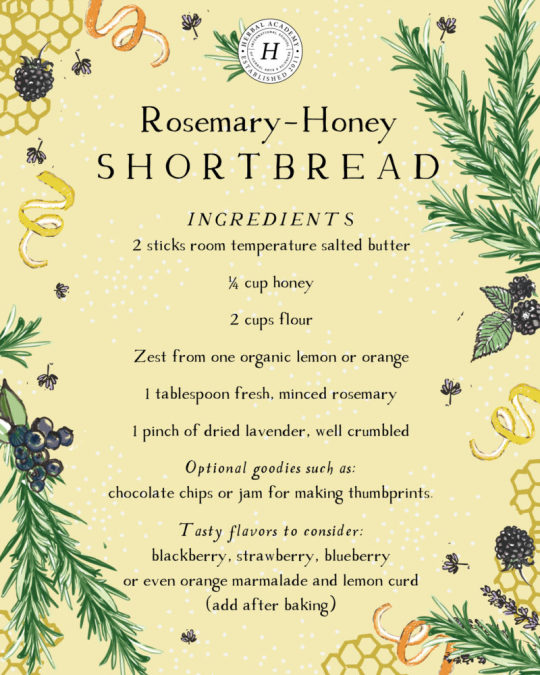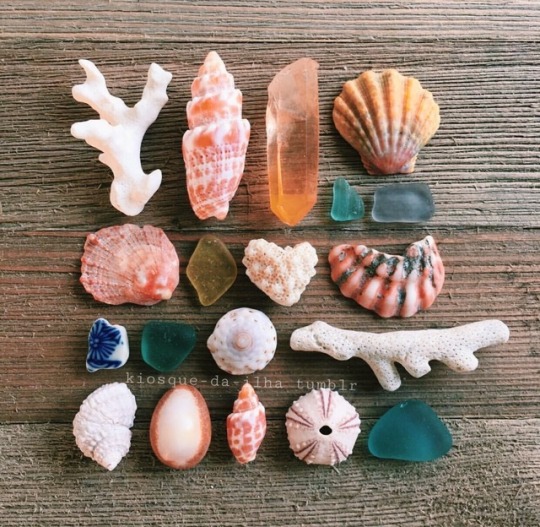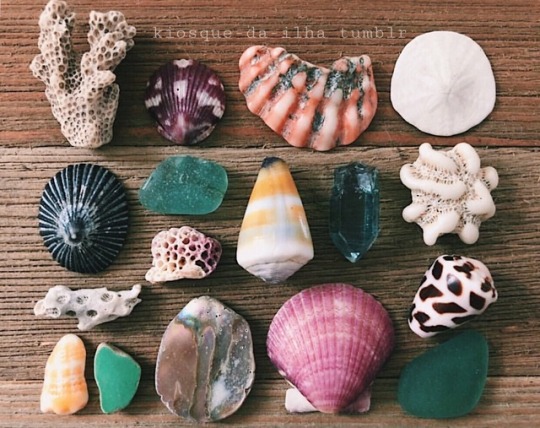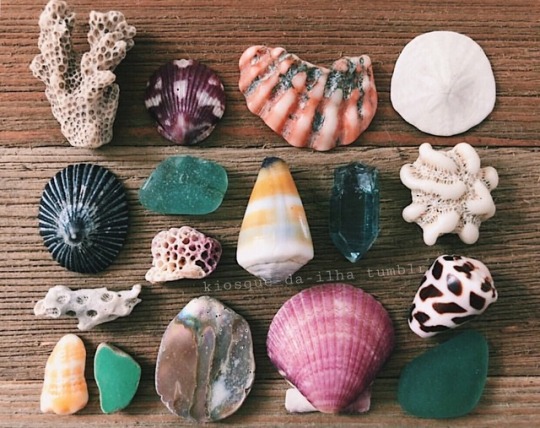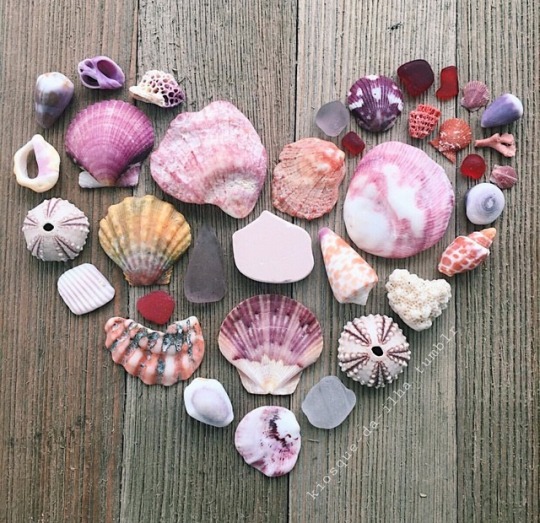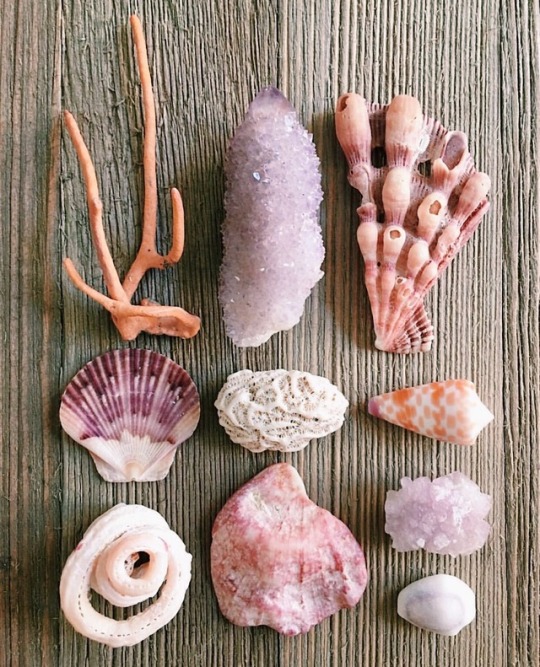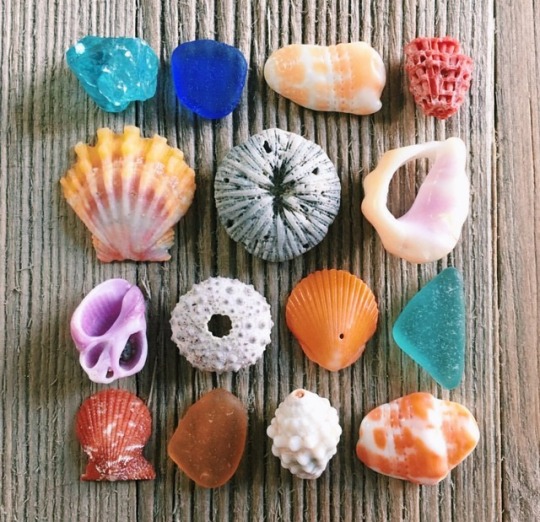Text
Cleansing my space for the solstice 🔥☀️✨


#witchblr#witchy#witchyvibes#cleansing#spells#smudge#sage smudging#winter#winter solstice#red candle#sun
15 notes
·
View notes
Text

#witchblr#witchy#witchyvibes#cleansing#crystals#amethyst#angelite#serpentine#hematite#bluegolden#lepiddite#self care#selenite
3 notes
·
View notes
Text
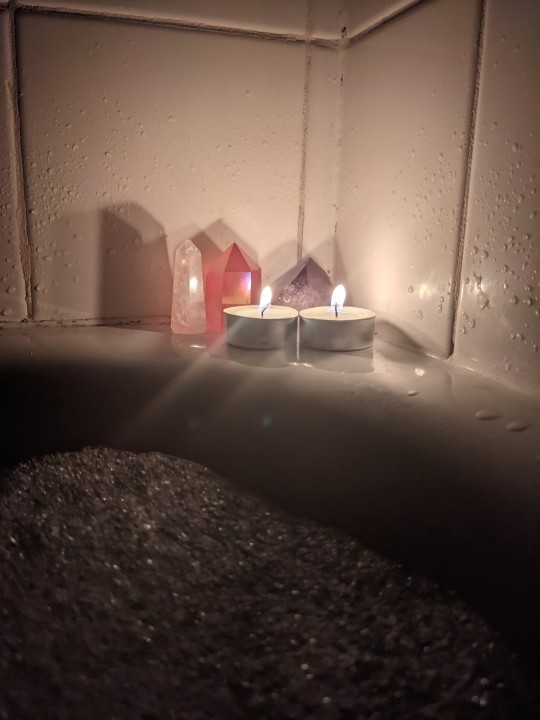
#witchy#witchblr#spells#crystals#amethyst#rose quartz#aura quartz#candles#candle magic#cleansing#healing#self care
1 note
·
View note
Text

My new wax melts are perfect for my little cauldron 🖤
2 notes
·
View notes
Text
The Eight Sabbats part 1
Note: please let me know in dms or in the comments if I missed something, or got something wrong! My point of making posts like these is to inform, but sometimes my research and information can be incorrect itself! Please let me know! <3 Part 2 is coming out soon.
The eight sabbats/the wheel of the year are holidays around the year, generally celebrated by pagans, witches, or wiccans. The sabbats/holidays divide the year into eight equal parts that mark the beginning and mid-points of each season. *The pictures included are not mine*

Solstice: The time (happens 2x a year) in which the sun reaches it's maximum/minimum destination. Marked by the longest and shortest days. June 21st and December 22nd.
Equinox: The time (happens 2x a year) in which the sun crosses the celestial equator, when day and night are at equal length.
Yuletide - December 21st-January 1st
Yuletide (yool - tide) or Yule takes place on the winter solstice, the shortest day and the longest night of the year. This is a time of joy as it is the starting point for light to enter the world again. Yule is a great time for home magick, personal magick, family quality time, and celebration. Short days of work and long nights of dreaming. Set intentions, make new plans, appreciate your work of the seasons before this.
Common traditions with Yuletide is to light candles on December 20th (Mid-Winter's Eve) to herald the return of the Sun. Another, the Yule log. Which is burned (often in a fire place) to represent the light that can be found in darkness. A piece of the log is traditionally saved to start the new year's fire.
Themes- Introspection, hope, rebirth, reflection, family, transformation, celebration.
Symbols- Bells, evergreen, gifts, ivy, mistletoe, wreath, yule log.
Colors- Gold, green, red, silver, white.
Food/Herbs- Apple cider, cinnamon, egg nog, gingerbread, nuts, pine, roast beef, rosemary, sage, wine, wintergreen.
To do- Burn Yule log, decorate, tell stories, wrap presents, spend time with family, burn a candle.
Good spells- Hope, happiness, love (not necessarily romantic), friendship, peace, bonds, prosperity.
834 notes
·
View notes
Text
🖤Happy Samhain 🖤
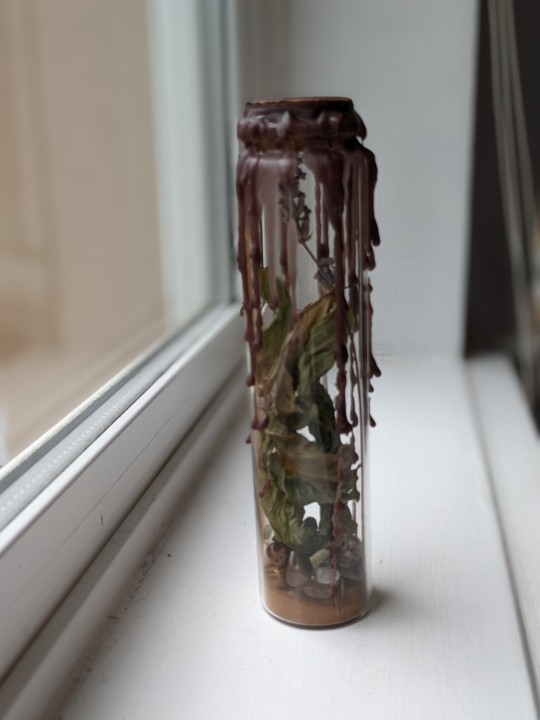
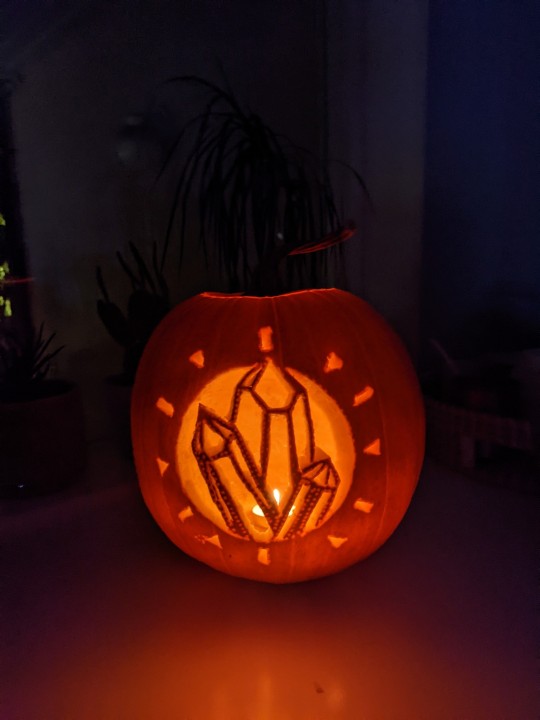
16 notes
·
View notes
Photo

Frank Brooks (1854-1937, British) ~ Girl with a Butterfly, 1891
[Source: artvee.com]
233 notes
·
View notes
Photo
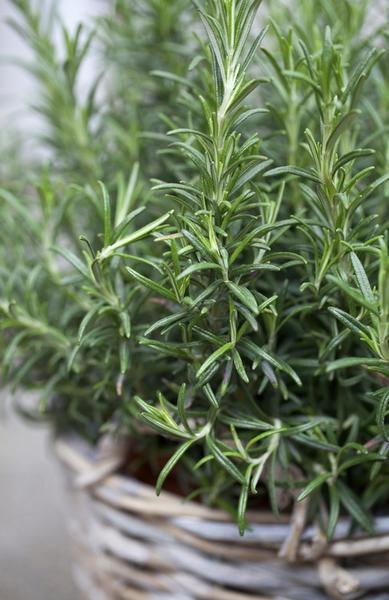

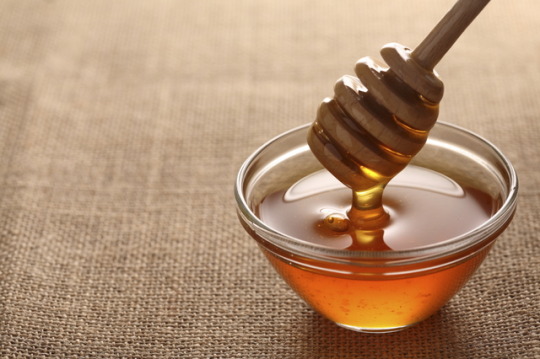

A poultice for calming Psoriasis by reducing inflammation and soothing the skin:
How to make -
1-3 TBSP Honey (depending on size of area)
20 Spearmint leaves mentha spicata finely chopped
3 sprigs of Rosemary rosmarinus officinalis de-pined
5 drops of Lavender essential oil
- Start by adding the pines of Rosemary to a Pestle & Mortar and bash them down to release the essential oils. Next add the Spearmint leaves and grind them down so they form a thick green mass. Add the honey and Lavender oil, muddle the mixture till it becomes a consistent paste.
- Soak a cloth in warm water and wring it out leaving it damp & warm. Apply the mixture to it evenly and place on the Psoriasis patch, you can bind it with a bandage if possible.
- You can leave this on for as long as you like but no longer than 2-3 hours is really necessary, I recommend reading or watching TV so it is undisturbed and you can pass the time!
—————————————————————————————————-
Why it works -
The honey forms the base of the poultice and binds the ingredients together but it is also effective in accelerating the rate of wound healing. It’s strong anti-bacterial properties help to prevent infection from arising and kill off any bacteria that may take hold.
The Lavender oil helps to reduce itchiness and relax the area helping in better blood circulation and reduced pain.
The Spearmint is there to reduce inflammation and pain while also providing strong antiseptic/antibacterial benefits which aid in wound healing.
Rosemary helps to reduce irritation and further promote healing.
—————————————————————————————————-
The Rosemary and Lavender is interchangeable, if you have one but not the other they can fill each others place.
Vegans can mix the ingredients in the Mortar with warm water and Lavender oil or Olive oil instead of Honey.
This is not intended for long term storage and should not be used on the face or children. For the face, locally applied honey can help to gently soothe the area.
Quick point on Psoriasis, unfortunately there is no cure or way to fully heal the wounds caused by it as it is an auto-immune disorder resulting in increased skin cell production in certain areas. This means that while we cannot make the areas vanish long term or fix the internal cause we can still deal with the external result of red, sore, inflamed and painful skin somewhat by calming and soothing it.
(:
212 notes
·
View notes
Text
Healing with Herbs
How to make a tincture
Making a tincture involves steeping the herb or root in alcohol, extracting
its oils, minerals, alkaloids, and glycosides so that it is in its purest form.
You can use vegetable glycerin or apple cider vinegar instead, particularly
in tinctures intended for children, but they aren’t quite as effective at
pulling out the good stuff.
You’ll need strong alcohol, at least 80 proof. Everclear works well, as does vodka or brandy. You’ll also need a pint jar to fill with the herb or plant you want—any of the herbs listed above will work here.
Chop the herb up a bit or bash it around with a mortar and pestle to help it break down. You’ll want the jar to be full, but not pack your herbs in too tightly.
Then fill the jar completely with the alcohol. (If you’re using dried herbs or roots, you need only put in enough to reach halfway, and then add the
alcohol up to the top.)
Seal the jar tightly. Label and date it, and let it rest in a cool, dark place.
For the first week, shake it once a day, then let it rest for five more weeks.
At the end of the resting period, use a layer of muslin or cheesecloth
held tightly over the jar to strain out the liquid. Decant the tincture into one
of those small, dark glass bottles, preferably one with a dropper, and keep it
stored away from direct sunlight. It should last for five to ten years.
How to make herbal oil
It’s more trouble than it’s worth to make your own essential oils. A true essential oil is extracted by boiling the herb in question and skimming the oil off the top—that’s a task best left to the professionals. But you can make your own herbal oil. It may not be quite as distilled, but it can still be effective, and it’s a great way to preserve herbs for use long into the winter. The nice thing about creating your own oils is that you can use any combination of herbs that you desire. You might mix calendula, catnip, lemon balm, marshmallow, mullein, plantain leaf, and yarrow for an oil that is particularly effective for skin care, or lavender, vervain, lemon balm, and yarrow for a soothing oil to rub on the temples. Chop or bruise your chosen herbs and place them in a jar. Fill the jar with the carrier oil of your choice (olive or almond oil works well), covering the herbs by one inch, and leaving one inch of space at the top. Close the jar tightly, and allow it to sit in as much sunshine as possible for a month. Strain the oil through a cheesecloth on an as-needed basis, leaving the rest to continue steeping.
How to make a poultice
A poultice is a soft, moist mass of herbs, cloth, and other ingredients, and
it’s an excellent tool for treating topical infirmities. A hot poultice is excellent for drawing out infection, as with bee stings or draining abscesses, while a cold poultice will help reduce inflammation.
Gather the herbs you want to use, either fresh or dried. If they’re fresh, you may want to mash the herbs up in a mortar and pestle (the traditional way) or blitz them through a food processor (the modern way). Even if you’re planning on making a cold poultice, add a couple of tablespoons of hot water to your herbs to awaken them, before letting them cool. You can add medicinal clay powder, Epsom salts, or baking soda and combine with water until the mixture becomes a thick paste.
For ailments like congestion or insect bites, you can place the poultice directly on the skin, making sure, of course, that it isn’t too hot. To treat a burn or something that could easily become infected, place a clean cotton cloth between the skin and the poultice.
Common herbs and their uses
Ashwagandha: The name translates to “smell of horse.” This herb is hard to find fresh, but powders, pills, teas, and extracts are available.
Benefits: Increases energy, boosts the immune system, antiinflammatory, reduces anxiety.
Suggested use: Stir ¼-½ tsp. powder into warm milk and honey
before bed.
Concerns: May increase thyroid hormone levels and lower blood
sugar.
Black cohosh: This member of the buttercup family could be grown in a garden. Dried roots, capsules, teas, and extracts are also available.
Benefits: Relieves menstrual cramps and arthritic pain. Eases symptoms of menopause.
Suggested use: Drink as a tea or mix with honey as a syrup.
Concerns: May cause upset stomach, so consider taking with food.
Calendula: Also known as marigold, this herb could be grown in a garden, but is also available as teas, oils, and creams. Useful for dyeing and food coloring as
well.
Benefits: Helps heal cuts. Good for diaper rash or other skin irritations. Calms an upset stomach.
Suggested use: Steep petals in just below boiling water for ten minutes, then drink as a tea. Add dried flowers to coconut, almond, or olive oil as a salve.
Concerns: None known.
Catnip: It’s not just for cats! Catnip is easily grown and also available as a capsule, tea, extract, and essential oil. It is also handy as an insect repellent.
Benefits: Anti-inflammatory. Good for insomnia, upset stomach, menstrual cramps, headache, and treating the common cold.
Suggested uses: Steep for tea, sprinkle essential oil into the bath or rub it on the temples, use in cooking (it’s a member of the mint family, so its flavor is better than some).
Concerns: None known.
Cranberry: Easily obtained fresh or frozen and also available in pill form, this herb is a great source of vitamin C, fiber, and vitamin E.
Benefits: Most frequently used to treat and prevent urinary tract infections. Also shown to reduce risk of cardiovascular disease, slow tumor progression in cancer, and help prevent gum disease.
Suggested uses: Because they’re so tart, cranberries often come with a lot of sugar. Try to buy reduced-sugar dried cranberries and stay away from most cranberry juices. If you can manage it, drink the unsweetened juice to relieve a UTI, and certainly try making your own cranberry sauce at Thanksgiving.
Concerns: None known.
Dittany: This is one of those herbs with a long history. It is also known as “burning bush.” Easily grown, it is hard to find in dried or tea form.
Benefits: Antibacterial, antifungal, and antimicrobial. Good for the skin and the intestines, and is thought to be an aphrodisiac.
Suggested uses: Steep in hot water for tea, but use sparingly. Use as an antibacterial balm or poultice.
Concerns: If you’ve put some on your skin, stay out of the sun, as it can increase the risk of sunburn.
Elderberry: This herb has been used to battle a flu epidemic in Panama as recently as 1995. It can be grown, but is also available as a pill or an extract. For your personal garden, look specifically for Sambucus nigra, as other elderberry
varieties can be toxic.
Benefits: Boosts the immune system, treats sinus infections, lowers blood sugar, acts as a diuretic and a laxative, good for skin health and allergies.
Suggested uses: They’re delicious! Can be made into a syrup, jams, or jellies—even wine.
Concerns: Don’t pick and use wild elderberry unless you’re absolutely certain the plant is Sambucus nigra. Always cook the berries to remove any toxicity.
Feverfew: This is another herb with a long history. Easily grown and available dried, it is most frequently found in capsule form.
Benefits: For centuries, it was used to relieve fever, to assist with
childbirth, and for fertility. Now it is most frequently used to prevent migraines. It can also help with tinnitus, nausea, dizziness, asthma, and allergies.
Suggested uses: It doesn’t taste good, so not recommended even as
a tea. Instead, make a tincture or purchase capsules.
Concerns: If you do drink it, feverfew can cause irritation in the mouth. If taken in large quantities on a regular basis, stopping can cause withdrawal symptoms, so use only as needed. May cause the uterus to contract, so don’t take while pregnant.
Horse chestnut: This is not the kind of chestnut you’d want to roast on a fire, but it is still useful. It is not recommended for personal processing, as the seed contains esculin, a poisonous substance. Purchase an extract or pill instead.
Benefits: Shown to be extremely effective against varicose veins. Also good for hemorrhoids and frostbite.
Suggested uses: 300 milligrams of horse chestnut seed extract twice
daily.
Concerns: Don’t consume raw horse chestnut seeds, bark, or leaves.
Lemon Balm: This member of the mint family has a distinct lemony scent. It is also known as “melissa.” It is easily grown, but also available in tea, extract, and
essential oil forms.
Benefits: Calms anxiety, encourages restful sleep. Good for the skin, improves mood and mental clarity.
Suggested uses: Steep fresh or dried to make tea, use in cooking, use to flavor honey or vinegar, use in a hot bath.
Concerns: None known.
Marshmallow: Sadly, these are not the things we put in hot chocolate. The root is available dried, as well as in powder, extract, capsule, and tea form.
Benefits: Aids with dry cough, represses inflammation in the lining of the stomach, good for chilblains and sunburn.
Suggested uses: Drink as a tea, add to a base oil for a salve.
Concerns: May cause low blood sugar.
Milk thistle: This herb is easily grown, as it’s pretty much a weed. It’s available as an extract, pill, or tea.
Benefits: Milk thistle can protect your liver from toxins—say, for instance, alcohol. It can even be used to treat cirrhosis and jaundice and helps with environmental toxin damage.
Suggested uses: Steep in hot water or make a tincture. Not recommended for use in cooking.
Concerns: May cause diarrhea.
Mullein: This is the clear quartz of herbal healing. It is easily found and grown and available both dried and in capsule form.
Benefits: Known particularly for respiratory relief, including cough, bronchitis, asthma, and pneumonia, it’s also good for earache, fever, sore throat, migraine, and to heal the skin.
Suggested uses: Apply a tincture to relieve ear infection, drink as a tea, use as a salve to heal wounds and bruises.
Concerns: None known.
Plantain leaf: Pretty hip these days, as herbal remedies go, plantain leaf is easily grown and available dried or in capsule form.
Benefits: Great for the skin, particularly in relieving insect bites, poison ivy, and sunburn. Lowers cholesterol, helps clear up bladder infections, relieves constipation or diarrhea.
Suggested uses: Make poultice with clay and water or make a salve with a base oil. Infuse vinegar to spray on the skin to provide pain relief. Drink as a tea.
Concerns: None known.
Rue: This herb is also known as “herb of grace.” Easily grown, it is also available dried, in capsule form, or as an essential oil.
Benefits: Used to promote menstruation, it provides a sense of calm and well-being and is good for relieving gas, mucus, and arthritis.
Suggested uses: As an oil or poultice it can relieve croup or chest congestion. Drink as a tea to ease anxiety.
Concerns: This one is serious—it can cause a miscarriage. Use in small amounts, regardless of whether or not you’re pregnant.
Valerian: This is an attractive addition to any garden, with a pleasing scent, but it is the root which holds the good stuff and that does not smell good. Easily grown, this herb is also available in tea, capsule, and extract forms.
Benefits: Valerian is very effective against insomnia. It also calms anxiety and depression, and helps with ADHD and headache.
Suggested uses: Drink a tea made from the leaves for a mild sedative, or steep the roots for something stronger. Add a tincture to a bath for a gentler, child-friendly alternative.
Concerns: None known, but obviously don’t operate heavy
machinery.
Vervain: Usually blue vervain is used, but other types seem to work just as well. Easily grown, vervain is also available dried or as an extract.
Benefits: Helps with anxiety and sleeplessness. Also provides pain relief, eases tense muscles, and promotes an overall sense of wellbeing.
Suggested uses: Steep in hot water as a tea. Not recommended in cooking, though it smells nice, so add a little to a bath.
Concerns: May cause nausea.
Yarrow: This member of the sunflower family is easily grown—and quite lovely— and available dried or as an essential oil.
Benefits: Relieves fever, as well as cold and flu symptoms. Relieves cramps, provides a sense of calm and relaxation, and aids in restful sleep. Suppresses the urge to urinate (say, during a UTI). Use topically for a rash or small cuts.
Suggested uses: Drink as a tea in the evening to induce sleepiness
or relieve cold and flu symptoms, or make into a salve for external use.
Concerns: None known.
Keep reading
11K notes
·
View notes
Text
Sunday is a day of rest.
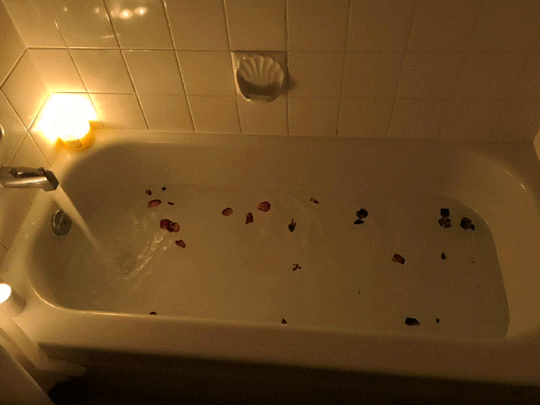
Rejuvenate the body spell
Materials:
-Epsom salts
-Rose Petals
-Rose Quartz
-Spell jar
-White Candles
-Diffuser
-lavendar essential oil
1. Find a clear jar and fill it with Epsom salts and rose petals, shake to combine. Place by a window with rose quartz to charge.
2. Clear the bath area of any objects. Set up your space with candles and crystals. Play some relaxing music, brew a cup of camomile tea, or add a face mask for extra relxation.
3. Light candles thinking of your intention. Start bath water and pour your salt mix in the bath.
4. Rejuvenate.
4 notes
·
View notes
Text

Ghost Pipe was something I saw last year and had no idea what it was until now. I am thinking that seeing this plant is a sign that it could be of use to me.
https://www.google.com/amp/s/wisdomoftheplantdevas.com/2019/10/04/ghost-pipe-a-hauntingly-rare-plant-for-physical-and-emotional-pain/amp/
0 notes
Photo






✨ MODERN WITCHES DAILY - SIGIL MASTERPOST ✨
Inner Peace / Protection / Inspiration / Courage / Self-Confidence / Health
I’m working on a project with my sigils and I thought it would be nice to put them all together somewhere! You can use them in your daily life! Lots of love and positive vibes to you my fellow witches ♥
Reblog appreciated ♥
Please, just don’t repost!
17K notes
·
View notes










